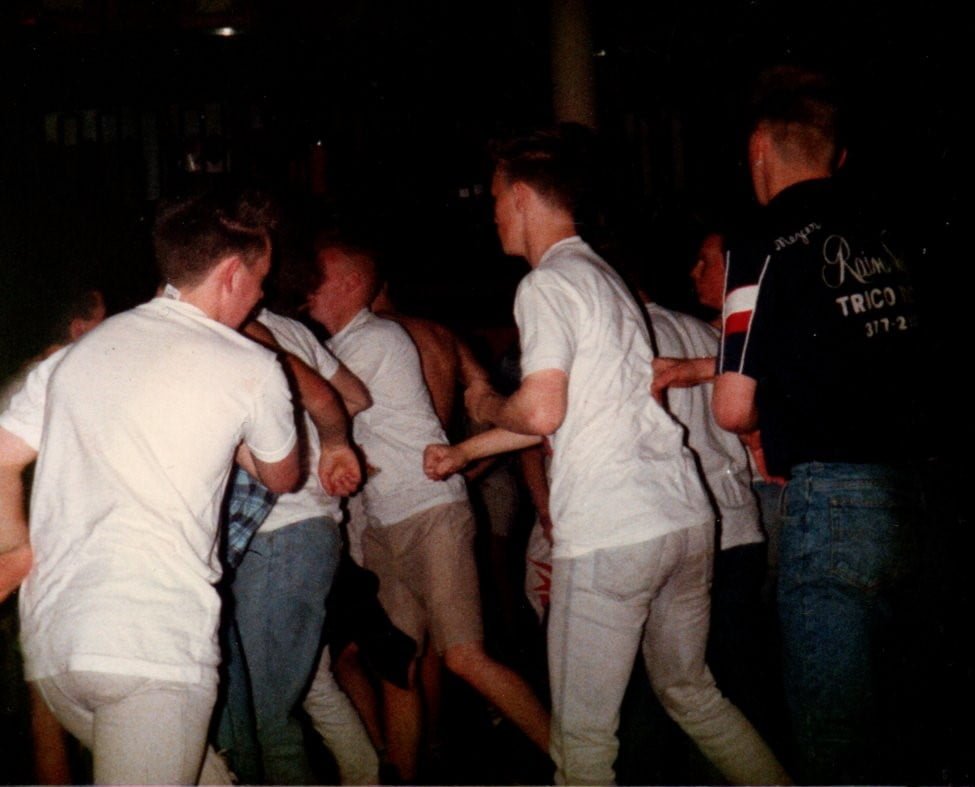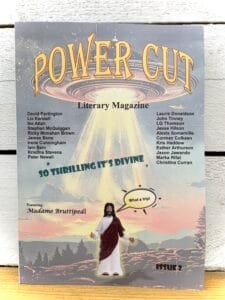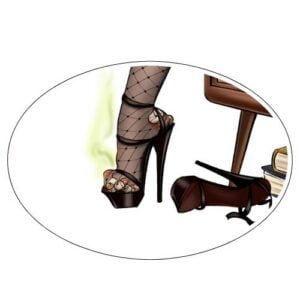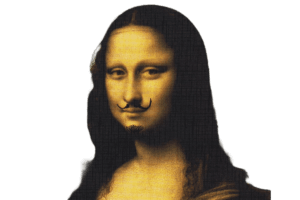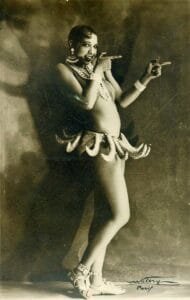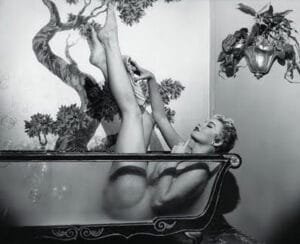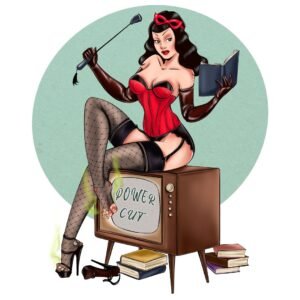This week we have a guest blog by Christina Curran, sharing her journey with photography and, specifically, therapeutic photography.
I have come to photography late in life – well, yes and no. When I was younger I took photographs of everything ; every gig I went to, the Halina 110 Flashmatic was tucked into a pocket and pulled out for drunken, lopsided shots. Unfortunately, the majority of those images were too blurry to be salvaged by the developers at Boots. I now look back on the missed opportunities I had to photograph 1980s youth culture from the inside, the female Gavin Watson wasn’t meant to be.
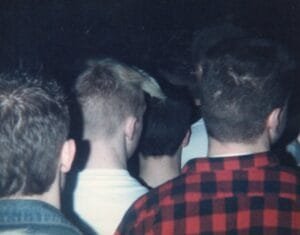
Image @Christina Curran
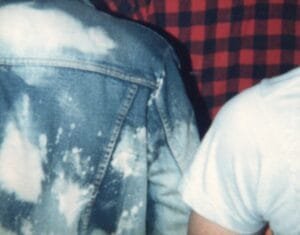
Image @Christina Curran
Unfortunately, the Halina didn’t survive the mosh pit and when I went travelling in the early 1990s, I took another cheap and cheerful camera with me, Looking at these images now I can see I had an eye for candid moments. But I didn’t think photography was a ‘thing’ that was done by everyday people, and certainly not everyday people with a shitty little camera. Photography was for famous and glamorous arty people with intimidating and expensive cameras. So I thought. I believe this is still a barrier to photography for many women – it involves ‘tech’ and that is often seen as a male domain. And so the camera was abandoned.

Himachal Pradesh @Christina Curran
Coming back to photography now, I do so from a social work background and this led me to discovering therapeutic photography. I feel it allows for the perfect blend of my professional experience and long neglected creativity.
Therapeutic photography is an approach to photography that integrates self-inquiry, emotional exploration, and psychological well-being. Unlike traditional photography, where technical ability and artistic vision are highly valued, the main aim of therapeutic photography is positive change. This form of photography encourages participants to explore their thoughts and feelings while creating visual narratives that reflect their inner world. It is about the process rather than the end result.
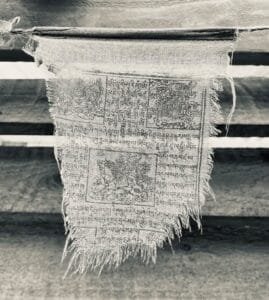
Tibetan Prayer Flag @Christina Curran
A practice that works well with therapeutic photography is mindfulness. Mindfulness encourages individuals to be present in the moment, allowing them to engage fully in the creative process and develop a deeper understanding of their emotions. The very practice of taking a photograph can be a mindful exercise – we need to be alert to our environment and see what the moment presents us. We then need to consciously decide how and when to take the picture.
For me therapeutic photography literally invites us to view things from a different perspective. By pointing the camera in a slightly different way, the whole frame is changed. That is the power of photography. We can use it in our everyday lives as a tool to change perspective, by externalising the issue the photograph becomes the focus rather than the internal feeling. An abstract photograph can be taken as a metaphor for something big in our lives. Rather than having to describe and explain a deeply internal experience, we can shift the focus to the external photograph. Therapeutic photography is often facilitated in groups, and the peer validation one can experience through discussion is, itself, a powerful healing tool. [It is important to note that therapeutic photography must be differentiated from PhotoTherapy, which should only be carried out by a trained counsellor or psychotherapist.]
The image that I have in Issue 2 of Power Cut magazine is of an Eldorado wine bottle, but so distorted as to create an almost psychedelic image. I am attracted to the surreal, but also the mundane and how perspective can make the most mundane scene or object fascinating.
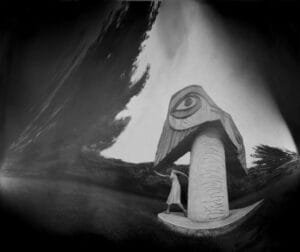
Local Haunt series by Sharon Harris
It is thought that 4.7 billion photographs are taken in the world every day – since the inception of the smartphone photography has become democratised – it is no longer the realm of arty-type men with expensive kit! However, much of this is part of current throwaway culture, photographs of the sandwich you had for lunch, a bag on sale in Primark, videos of gigs that will never be viewed again. Rather than living in the moment, many of us are relying on the smartphone camera for our memories. That is why I am drawn to analogue photography, the use of film means there has to be a more considered approach. Given that there is only a certain number of exposures in a roll of film, every shot matters! I am especially drawn to pinhole photography for the very reason that it is in so many ways antithetical to throwaway filter-laden images. Pinhole photography is the most basic form of photography and does not require a lens. A pinhole camera can be made from any lightproof box or tin such as cereal boxes and beer cans! Given that pinhole photography is fundamentally low-tech, it has a very unique aesthetic – often ethereal and dream-like as seen in Sharon Harris’s work.
I also love the work of mid-20th century female photographers, Vivien Maier in particular.
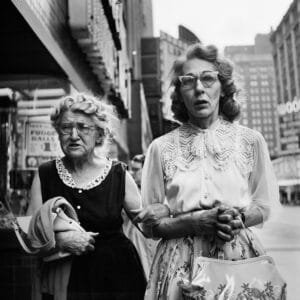
Image @Vivien Maier
Vivien Maier, an enigmatic figure in the realm of street photography, was born in New York City in 1926. Maier worked as a nanny, but developed a passion for capturing the candid moments of urban life around her. Maier’s photographs reveal a keen sense of observation and an ability to tell a story through the photograph. Despite her talent, Maier’s work remained largely undiscovered during her lifetime, illustrating the barriers encountered by women in professional photography. However, posthumously, her extensive body of work has garnered recognition, emphasizing the importance of her perspective in documenting daily life in the mid-20th century. Maier left behind over 100,000 negatives, and was only re-discovered in 2007 at a Chicago auction house. Filmmaker, John Maloof, has led the charge in preserving her work, and in 2013 made the documentary Finding Vivien Maier.
I am very much at the beginning of my photography journey, but I hope the knowledge and insight I have (hopefully garnered) will allow me to take considered and thoughtful pictures, pictures with a story and something to say.
You can find Christina’s work on Instagram:
@pinholecurran
